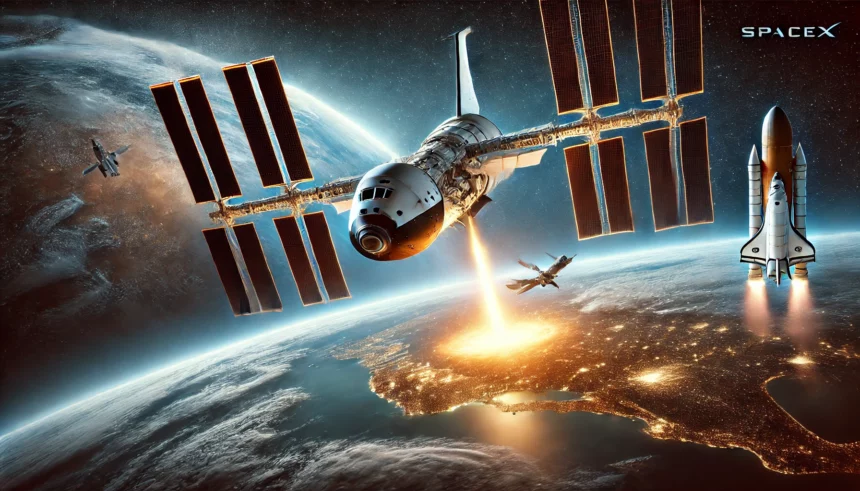SpaceX Steps Up for the ISS’s Final Mission
The International Space Station (ISS), a cornerstone of global space exploration for over two decades, is nearing the End of its operational life. In a recent announcement, NASA revealed plans, in collaboration with SpaceX, to retire the ISS by safely removing it from orbit. This complex task involves a specially modified SpaceX Dragon spacecraft, designed to guide the ISS to a secure destruction over a remote ocean area by 2031.
Enhancing Dragon for a Monumental Task
SpaceX’s current Dragon spacecraft are adept at transporting astronauts and cargo to and from the ISS. However, decommissioning the massive station, which weighs approximately 925,000 pounds, requires significantly more power. To meet this challenge, SpaceX will equip a Cargo Dragon with a high-powered trunk and boost its capabilities with 46 Draco engines—30 more than the standard model. This upgrade transforms the cargo vessel into a robust “deorbit vehicle,” capable of handling the intense demands of guiding the ISS toward its final descent.
Final Descent into the Ocean
The mission’s climax will involve a critical burn maneuver, a precise operation aimed at ensuring the ISS enters the Earth’s atmosphere correctly and heads towards a predetermined splashdown zone in the South Pacific Ocean. This location is chosen to avoid any risk of debris impacting populated areas. Sarah Walker, SpaceX’s director of Dragon mission management, emphasized the importance of this operation, stating that it’s crucial for the spacecraft to endure the forces during this phase to ensure a successful conclusion to the ISS’s journey.
The Future of Space Exploration
This mission not only signifies the End of an era but also paves the way for future advancements in space exploration. NASA and SpaceX celebrate this significant transition, acknowledging the role of the Dragon spacecraft in both the past achievements and future endeavors in space. Looking beyond 2030, NASA plans to participate in new space station projects, transitioning to roles on commercially-operated platforms, which will continue to advance human capabilities in orbit.
Related Links and Resources:
This mission not only marks a significant technical achievement by safely decommissioning the aging ISS but also symbolizes a shift towards more sustainable and cost-effective solutions in space exploration, where private companies play an increasingly prominent role.
















